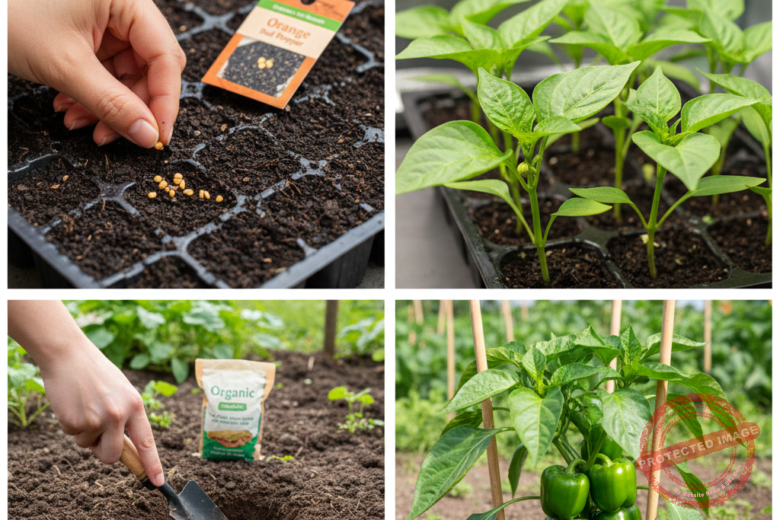Lemon trees are a popular choice for home gardeners, providing fragrant blossoms and vibrant, juicy fruits. However, they can sometimes present challenges, with curling leaves being a common issue.
Understanding the causes of this problem and knowing how to address them is essential for maintaining a healthy and productive lemon tree.
In this comprehensive guide, we will explore the various reasons why lemon tree leaves curl and provide effective solutions to keep your lemon tree in optimal condition.
Introduction
Lemon trees are a delightful addition to any garden, offering a touch of the Mediterranean with their aromatic flowers and flavorful fruit. However, like all plants, they are susceptible to certain issues. One of the most frequently encountered problems is leaf curling. This symptom can be alarming for gardeners, as it often indicates an underlying issue that needs attention. Leaf curling can result from a variety of factors, including environmental stress, pest infestations, and nutritional deficiencies. Understanding these causes is the first step towards finding the right solution and ensuring the health and productivity of your lemon tree.
Curling leaves can affect the overall health of the tree, potentially reducing fruit yield and quality. Therefore, it’s crucial to identify the cause promptly and take appropriate action. This guide will help you diagnose the problem and provide practical solutions to restore your lemon tree to its best condition.
Common Causes of Lemon Tree Leaf Curling
1. Environmental Stress
Environmental stress is a leading cause of leaf curling in lemon trees. Factors such as temperature extremes, inadequate watering, and poor soil conditions can all contribute to this issue.
Temperature Extremes
Lemon trees thrive in warm, subtropical climates. Exposure to temperatures that are too hot or too cold can cause leaves to curl. Frost damage in particular can be detrimental, leading to leaf curling, browning, and eventual drop. During extreme heat, the leaves may curl to conserve moisture.
Solution: Protect your lemon tree from temperature extremes by providing shade during hot summer months and covering it with frost cloth or moving potted trees indoors during cold snaps. Ensuring a stable environment can significantly reduce stress and leaf curling.
Inadequate Watering
Both overwatering and underwatering can cause leaf curling. Overwatering leads to waterlogged soil, which can suffocate the roots and cause the leaves to curl downward. Underwatering, on the other hand, results in dry soil, causing leaves to curl upward in an attempt to reduce water loss.
Solution: Maintain consistent soil moisture by watering your lemon tree deeply but infrequently. Ensure the soil is well-draining to prevent waterlogging. A good rule of thumb is to water when the top inch of soil feels dry to the touch.
Poor Soil Conditions
Lemon trees require well-draining, slightly acidic soil. Poor soil conditions, such as heavy clay or overly alkaline soil, can lead to nutrient deficiencies and root stress, resulting in curled leaves.
Solution: Improve soil conditions by adding organic matter, such as compost, to enhance drainage and fertility. If necessary, adjust the soil pH to the optimal range of 6.0-7.0 using soil amendments.
2. Pest Infestations
Pests are another common cause of leaf curling in lemon trees. Insects such as aphids, spider mites, and leaf miners can damage the foliage, leading to curling leaves.
Aphids
Aphids are tiny, sap-sucking insects that often cluster on the undersides of leaves and new growth. Their feeding can cause leaves to curl, yellow, and become distorted.
Solution: Control aphid populations by introducing natural predators, such as ladybugs, or using insecticidal soap. Regularly inspect your lemon tree for aphids and remove them by spraying with water or applying neem oil.
Spider Mites
Spider mites are minuscule pests that can cause significant damage to lemon trees. They suck the sap from leaves, leading to stippling, curling, and eventual leaf drop. Fine webbing on the leaves is a telltale sign of spider mite infestation.
Solution: Mitigate spider mite infestations by regularly spraying the leaves with water to dislodge the mites. In severe cases, use miticides or horticultural oils. Maintaining humidity around the tree can also help deter spider mites, as they thrive in dry conditions.
Leaf Miners
Leaf miners are larvae of certain moths and flies that burrow into leaves, creating tunnels and causing the leaves to curl and become distorted.
Solution: Remove and destroy affected leaves to reduce the leaf miner population. Use organic insecticides, such as spinosad, to control the larvae. Encouraging natural predators, like parasitic wasps, can also help manage leaf miners.
3. Nutritional Deficiencies
Lemon trees require a balanced supply of nutrients to maintain healthy growth. Deficiencies in essential nutrients can manifest as leaf curling and other symptoms.
Nitrogen Deficiency
Nitrogen is crucial for leaf development and overall plant growth. A deficiency in nitrogen can cause older leaves to yellow and curl.
Solution: Apply a balanced fertilizer with a higher nitrogen content to correct the deficiency. Organic options, such as composted manure or blood meal, can provide a slow-release source of nitrogen.
Magnesium Deficiency
Magnesium is vital for chlorophyll production and energy transfer within the plant. A magnesium deficiency often causes interveinal chlorosis (yellowing between the veins) and leaf curling.
Solution: Address magnesium deficiency by applying Epsom salts (magnesium sulfate) to the soil or as a foliar spray. Regularly fertilize with a balanced citrus fertilizer that includes magnesium.
Potassium Deficiency
Potassium is essential for various physiological processes in lemon trees, including water regulation and enzyme activation. A deficiency can lead to leaf curling, browning of leaf edges, and reduced fruit quality.
Solution: Correct potassium deficiency by applying a potassium-rich fertilizer, such as sulfate of potash. Ensuring a balanced fertilization regimen can prevent future deficiencies.
4. Disease Issues
Fungal and bacterial diseases can also cause leaf curling in lemon trees. Common diseases affecting lemon trees include citrus canker and root rot.
Citrus Canker
Citrus canker is a bacterial disease that causes lesions on leaves, stems, and fruit. Infected leaves may curl, yellow, and drop prematurely.
Solution: Manage citrus canker by removing and destroying infected plant parts. Apply copper-based bactericides to control the spread of the disease. Implementing good sanitation practices and avoiding overhead irrigation can also reduce the risk of infection.
Root Rot
Root rot, caused by soilborne fungi, leads to the decay of roots, affecting the tree’s ability to absorb water and nutrients. Symptoms include yellowing, curling leaves, and a general decline in tree health.
Solution: Prevent root rot by ensuring well-draining soil and avoiding overwatering. If root rot is detected, improve drainage and apply fungicides to control the spread. In severe cases, replanting the tree in fresh, well-draining soil may be necessary.
5. Physiological Disorders
Certain physiological disorders, such as citrus leaf curl virus and genetic factors, can also cause leaf curling.
Citrus Leaf Curl Virus
Citrus leaf curl virus is a relatively rare but serious condition that causes severe leaf curling and distortion. Infected trees may show reduced growth and yield.
Solution: There is no cure for citrus leaf curl virus. Prevent the spread by removing and destroying infected trees. Use certified disease-free planting material and control insect vectors, such as aphids, to reduce the risk of infection.
Genetic Factors
Some lemon tree varieties are more prone to leaf curling due to their genetic makeup. In such cases, the curling may not significantly impact the tree’s health or productivity.
Solution: If genetic factors are the cause, ensure the tree receives optimal care to minimize stress. Prune affected leaves to improve air circulation and maintain overall tree health.
Solutions to Keep Your Lemon Tree Healthy
Maintaining the health of your lemon tree requires a combination of proper care practices, timely interventions, and regular monitoring. Here are some essential tips to keep your lemon tree thriving:
1. Provide Optimal Growing Conditions
Ensure your lemon tree receives adequate sunlight, water, and nutrients to promote healthy growth. Lemon trees require at least 6-8 hours of direct sunlight daily. Water deeply and infrequently, allowing the soil to dry slightly between waterings. Use a balanced fertilizer formulated for citrus trees to provide essential nutrients.
2. Monitor for Pests and Diseases
Regularly inspect your lemon tree for signs of pests and diseases. Early detection allows for timely intervention and prevents severe infestations. Use organic or chemical controls as needed to manage pests and diseases effectively. Encourage beneficial insects, such as ladybugs and predatory mites, to naturally control pest populations.
3. Prune and Maintain Proper Airflow
Pruning is essential for maintaining the shape, health, and productivity of your lemon tree. Remove dead, diseased, or damaged branches to improve air circulation and reduce the risk of fungal infections. Prune during the dormant season or after fruit harvest to avoid stressing the tree.
4. Maintain Soil Health
Healthy soil is the foundation of a healthy lemon tree. Regularly amend the soil with organic matter, such as compost or well-rotted manure, to improve its structure and fertility. Mulch around the base of the tree to retain moisture, suppress weeds, and regulate soil temperature.
5. Address Nutrient Deficiencies Promptly
Regularly fertilize your lemon tree with a balanced citrus fertilizer to prevent nutrient deficiencies. Conduct soil tests to determine nutrient levels and adjust your fertilization regimen accordingly. Foliar sprays can provide a quick remedy for certain deficiencies, such as magnesium.
6. Protect from Environmental Stress
Shield your lemon tree from extreme temperatures, frost, and strong winds. Use frost cloths, shade cloths, or temporary windbreaks to provide protection during adverse weather conditions. Mulching and proper irrigation practices can help mitigate temperature fluctuations and maintain soil moisture.
7. Stay Informed and Educated
Stay updated on best practices for lemon tree care by consulting gardening resources, attending workshops, and seeking advice from experienced gardeners or horticulturists. Knowledge and vigilance are key to maintaining a healthy lemon tree and preventing issues before they escalate.
Conclusion
Leaf curling in lemon trees can be a sign of various underlying issues, from environmental stress and pest infestations to nutritional deficiencies and diseases. By understanding the causes and implementing appropriate solutions, you can restore your lemon tree to optimal health and ensure a bountiful harvest of delicious, home-grown lemons. Regular monitoring, proper care practices, and timely interventions are essential for maintaining the health and productivity of your lemon tree. With dedication and attention to detail, you can enjoy the beauty and bounty of a thriving lemon tree in your garden.



